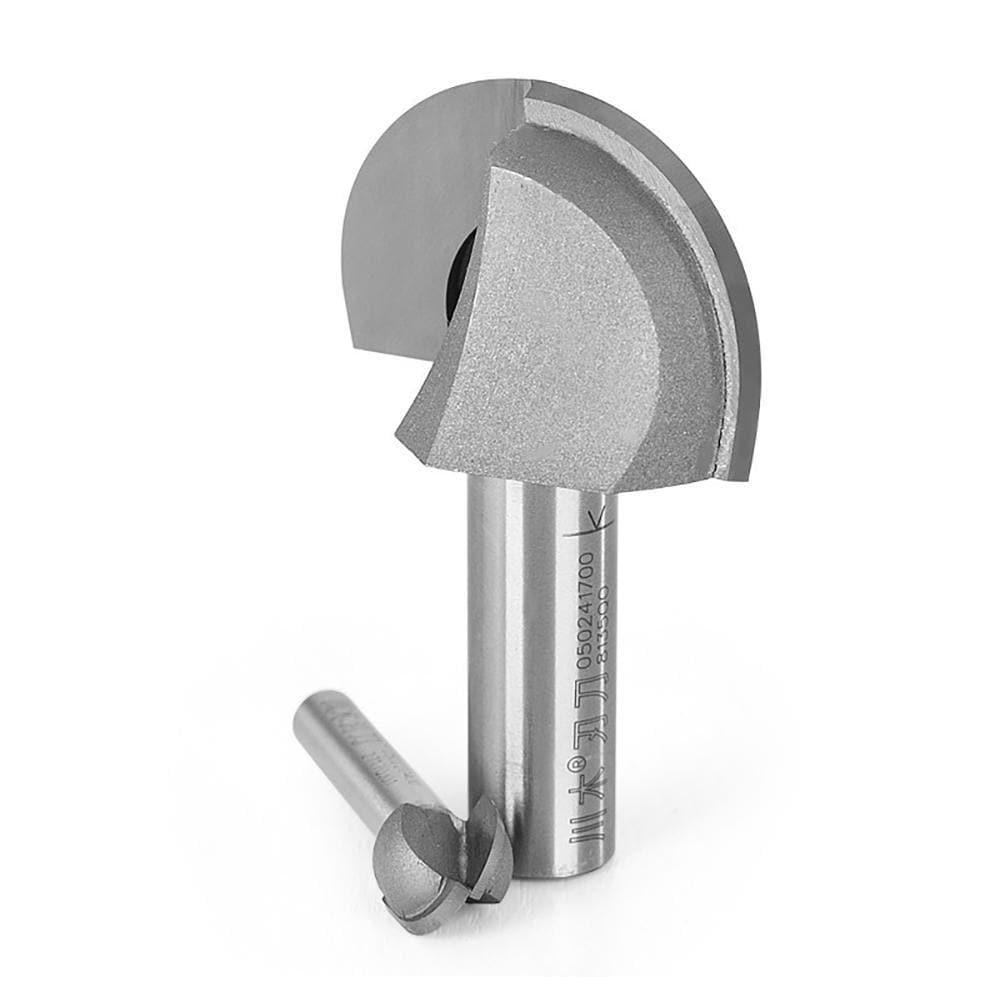What is the difference between round nose bit and cove bit
A round nose bit and a cove bit are both types of router bits used in woodworking to create curved profiles or decorative edges. While they are similar in some ways, there are distinct differences between the two.
1. Profile Shape:
A round nose bit, also known as a core box bit, features a rounded, semi-circular cutting edge. When used with a router, it creates a smooth, rounded groove or channel. The profile resembles a half-circle, with a gradual curve from the bottom of the bit to the top.
A cove bit, on the other hand, has a concave cutting edge that forms an inward curve. It produces a curved groove with a concave shape, often referred to as a "cove." The cove profile is typically deeper at the center and tapers towards the edges.
2. Applications:
Due to their different profile shapes, round nose bits and cove bits are used for distinct woodworking applications.
Round nose bits are commonly used for creating decorative fluting, grooves, or channels in woodwork. They are often employed for producing decorative edges on furniture, molding, trim, or other woodworking projects. The rounded profile of the bit gives a smooth and visually appealing result. Round nose bits are versatile and can be used for both functional and decorative purposes.
Cove bits, on the other hand, are primarily used for making concave profiles or decorative edges. They are often used to create coves on the edges of furniture, moldings, picture frames, and other woodworking applications where a concave shape is desired. Cove bits can add elegance and depth to the edges of the workpiece, providing a visually pleasing and decorative effect.

Core Box / Round Nose Router Bit
3. Depth and Size Options:
Round nose bits and cove bits are available in various sizes and depths, allowing for flexibility in achieving different design requirements.
Round nose bits come in different diameters, which determine the width of the groove or channel created. The depth of the cut can also be adjusted based on the specific router bit and the desired effect. With different size options, round nose bits can accommodate a range of project needs, from creating narrow grooves to wider channels.
Cove bits are available in various sizes and depths, allowing for customization of the concave profile. Different diameter and depth options provide flexibility to match the specific design needs of a project. By selecting the appropriate size and depth, woodworkers can achieve the desired concave shape and depth for their decorative edges or profiles.
In summary, the key differences between a round nose router bit and a cove bit lie in their profile shapes and intended applications. The round nose bit creates a rounded groove or channel, often used for decorative fluting, while the cove bit produces a concave shape and is commonly employed for creating decorative edges with an inward curve. Understanding these distinctions can help in selecting the appropriate router bit for achieving the desired woodworking effect.